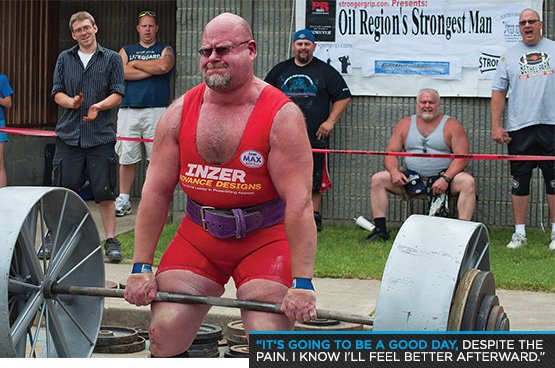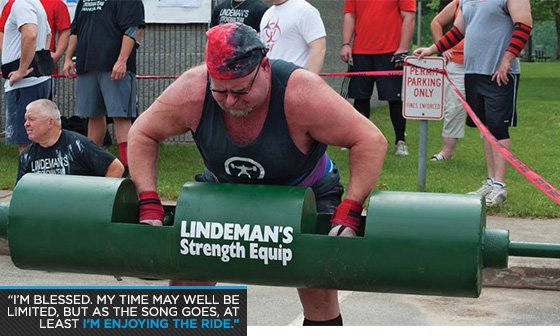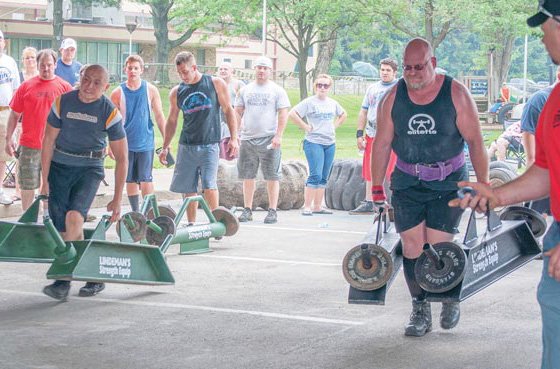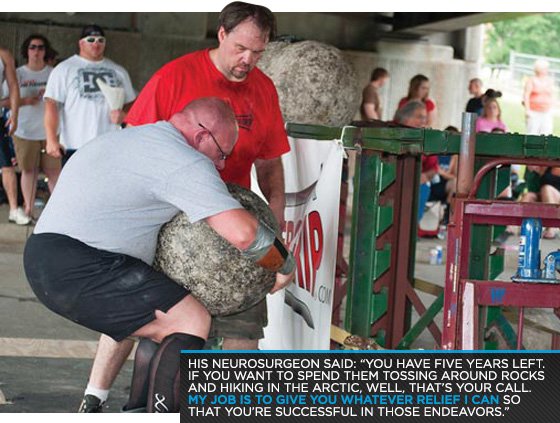I wake up just before the alarm. It's still dark outside. The night creatures are still making their noise. The noise abates as they finish their shift. Lying there, I go through the same little drill as always, evaluating how much it's going to hurt to get out of bed. Low back? Left leg? Is the left big toe still feeling like pins and needles? Can I move the foot? What about the sciatic nerve on both legs? The shoulders?
As I stand, slowly, I wait to feel what's going to hurt, and how badly. Upper back? These days, I notice that I seem to shuffle along, with the left shoulder pulled further forward, for the first part of the morning. It seems to let up after a bit, but it could just be that my mind starts to focus on other things and ignores this deformity after a while.
I'm three inches shorter than I was 18 months ago. I just don't have the strength to fight my spine's natural curvature anymore. I discovered, recently, that it hurts a bit to maintain good posture; that's something else to discuss with the neurosurgeon.
I shuffle off to the bathroom to take the first round of pain meds for the day. I have certain pain meds I take primarily at night, because they make my mind do funny things. During the day, I rely on more standard opioids; if I can get on top of the pain right away in the morning, I can generally have a pretty good day.
When I finally make it to the gym, every joint in my body aches. I bend over and get set to pick up a 12-inch log. My hands ache. The pain continues up my arms to my shoulders. I ignore this pain, get my back tight, and squeeze my lats. I dip down and pull the log onto my lap, ignoring the burst of pain in my hips. I take a deep breath, focus on a big belly of air, set my lats one more time, squeezing that log into me with all my strength, and explode up, sending the log flying up to land on my chest, nearly knocking me over backward.

All this takes only a few seconds.
It's going to be a good day, despite the pain. I push through and complete another training session. I know I'll feel better afterward. I've come to accept that not all training sessions will be stellar. Gains are measured in months and years with this body; it took me a while to come to terms with this. I've come close to quitting many times as a new pain appears, as something else gets torn, as injury after injury stacks up.
I was competing as a Master Heavyweight at Oil Regions Strongest Man in 2010. I decided to try to pull 725 for my third attempt on max deadlift, despite not needing a third attempt to win the event. I'm dumb that way. It's one of my strengths.
I made the pull. It took, according to the announcer, a full 10 seconds from start to finish. The crowd was frenzied. I swear everybody who saw that lift remembers it years later. I competed at the Oil Region again in 2012, that time with no real training.
My coach Mike Tuchscherer and I agreed that I needed to get a competition under my belt, and that we would treat it as a training session. As is the case with Strongman competitions, you run into friends. I caught up with one such friend after the comp, and mentioned that I had limited time. Of course, he asked me why I felt there was a time constraint.
There's no easy way to answer that question. I try to be straightforward, and unemotional, but behind the keyboard, I'm pretty emotional as I type the answer. Some days, the answer weighs heavily upon me: I have a disease called Diffuse Idiopathic Skeletal Hyperostosis (DISH). This disease, in my case, is pretty advanced. On the one hand, it's simple: All my connective tissue is turning to bone. It hit my ankles, hips and spine hard. Some days, I notice how hard it is to get moving. Other days, things seem to tear apart in my body for no reason.
When I talk in a group setting about training with this disease, I relate a couple quick stories. The first story goes back to 1992, when I learned how to deadlift for the first time. I started with 95 pounds. Within eight weeks, I pulled 500 from the floor. I didn't think too much about it, and over the years, I drifted away from training and spent more time with work and other things. I never did pull much more than 500 as a young man.
In 2005, I realized that my body was not happy with my choices. I was not happy with my choices. I decided, for my 45th birthday, to give myself a huge present: I would restructure my life to make training a priority. At that time, I had intermittent back and hip pain, and sometimes had trouble walking.
I was also morbidly obese. I weighed more than 350 pounds, with a 54-inch waist. I thought that most of my pain, stiffness and problems were just side effects of obesity.
So, I started to work out. I hiked regularly and revived my home gym, but I had a lot of pain, and major problems moving. I went to a doctor who told me there was nothing wrong with me, so I kept trying to lift, but got nowhere.
I ended up seeing a chiropractor who actually listened to me, examined me, and ordered X-rays. I was diagnosed with DISH in 2006.
I trained hard and smart, doing whatever it took. By the beginning of 2007, I deadlifted 500 pounds again. By the end of 2007, I lost about 100 pounds. By mid-2008, I took first place in the Master's Class at the first Strongman competition I entered. It took me a lot of work and two-and-a-half years, but I had reached a goal.

Somewhere along my journey, I realized that I'm blessed. I could have lived out the rest of my life being unhappy, not reaching any kind of physical goals, had this disease not interrupted me and forced me to realize what was important, and who I am. My time may well be limited but, as the song goes, at least I'm enjoying the ride.
The gains are slow, so slow that I'll never be able to reach an early goal of competing in the open division and going to nationals. I'm not so sure that I can set any goals anymore; I'm also willing to just let momentum carry me for a bit. Momentum, once gathered, propels me without any significant willpower investment. We all need periods when we cruise, I think.
Based on the buildup of bone on the anterior spinal ligaments in the thoracic region, spreading down into the lumbar region, various doctors guessed in 2011 that I probably had about seven good years left. Good, of course, being relative: My ankles don't work, which means that my hips have to work harder with each step I take, which may or may not encourage the disease to target my hips.
There's no cure. Standard medical advice is to basically become a couch potato, and avoid any activity that can stress the spine. Think about that last sentence ... focus on the part about stressing the spine. Now, think about your typical Strongman training session.
Nobody knows much about this disease. I think the stats are something like five percent of people 75 and older will be stricken by this disease, and it will be diagnosed secondarily, because it causes other symptoms like nerve impingements. Only half of one percent of the population from age 50-70 will be diagnosed; nobody under the age of 50 is diagnosed.
I mentioned I was diagnosed in 2006, at age 45—and the disease was already extremely advanced. I was diagnosed by a chiropractor, who I went to see because I was having trouble squatting; the doctor I saw told me nothing was wrong with me. The chiropractor looked at me, tried to move me and announced: "Dude, something is seriously wrong with your back. It's like a brick wall here. It doesn't move ... at all. I won't treat you until we get X-rays to see what's going on." So, we got X-rays.
Some dates never leave you: May 6, 2006. I had my second visit with the chiropractor. As soon as I got into the exam room, I could tell something was wrong; he was visibly upset. We went over the diagnosis of DISH, easily seen in the X-rays. My anterior spinal ligaments are huge, coated with excess bone. They look like somebody poured layers and layers of candle wax on my spine.
We knew I couldn't receive traditional chiropractic manipulations: one aspect of the disease is that the spine becomes weakened to the point that people with advanced cases of DISH have their spines spontaneously fracture from moving the wrong way.
This chiropractor is an Active Release Technique (ART) practitioner. As part of my evaluation, we made a video of me doing basic movements, like raising my arms over my head. That video was reviewed by Dr. Leahy, the founder of ART. In his review, he stated that I was a lost cause and nothing could help me. The chiropractor told me all this, talked with me about what he knew of my disease and how there was no good prognosis. He also told me that he felt, despite the bad prognosis, that he could help me.
After more than five years of twice weekly visits, I got to a point where I could move somewhat normally, at least normally enough to do Strongman. This was not an easy five years: Those twice weekly visits, at $100 a pop, were paid for out of pocket. Such is life. It's never simple.
I remember milestones along the way: the first time I was able to retract my shoulder blades, even a fraction of an inch. I was so impressed and so happy that I could finally do this. It opened up a whole new way for me to approach pressing.

I've learned to live with complexity. I remember fall 2009. I was doing trap-bar deadlifts with a moderate weight, and something popped in my left shoulder. Within a few minutes I had extreme pain in my back. I drove to the ER and immediately had my thoracic spine X-rayed; everybody was concerned that my spine had fractured. I remember the radiologist on duty seeing my X-ray and asking what I was doing when this happened. I told her I was training and doing a deadlift variation with 520 lbs.
She looked at me, then back at my X-ray. "My son is a bodybuilder," she said. "He lifts weights all the time. He can't deadlift 520 pounds. Your spine is so twisted, so damaged. How can you pick up so much weight?"
This complexity throws doctors. I've always struggled with my left calf cramping up. Over the years, I've suffered from extremely painful plantar fasciitis. The day it started, I competed and had no problems during the comp. My wife and I drove home after.
When I stepped out of the SUV, it was like somebody drove a spike through my left heel. The pain stayed with me so long and was so crippling that I seriously thought about having my foot amputated. I tried many pain medicines with no luck. Cortisone injections were no help. Nothing gave me relief.
Then, suddenly, one day while training the axle press, something seemed to pop behind my left knee. I was unable to put any weight on the left leg, but the pain in my heel was gone. Fair trade—actually, more than fair. I was thankful, as I hobbled around on crutches, that I was no longer carrying that particular pain in my left heel.
Fast-forward a bit: I started to have a lot of pain in my low back. I went to a doctor. She pulled my history and immediately ordered thoracic X-rays. I got the X-rays, of course, and as I was reviewing them with her my low back was going into severe spasms. She was convinced that it was my thoracic spine and ordered a DXA bone density scan.
I left her office in terrible pain, my low back in spasm, pain radiating into my left leg. I never got that DXA scan, and I never went back to see her. She was missing the point. The complexity of my case baffled her.
There are a few things important to me: Strongman is right up there, but my Alaskan Malamutes and Siberian Huskies are at the top of the list. I love nothing more than hiking with them in the dead of winter.
In January 2011, I was hiking in a fresh snow when I knew I was in trouble. I was having a lot of problems moving my left leg; there was a lot of pain, and it took all my effort to walk. It was cold out, there was a biting wind, and it was snowing.
I stripped down to a shirt with sweat dripping from my torso. It took me more than 20 minutes to cover 100 yards. It was that hard to move my left leg.
I decided to try a new chiropractor, and also reached out to a powerlifting buddy who is a physical therapist. My buddy and I talked for an hour, and he referred me to a neurosurgeon. I followed through with the new chiropractor, as well.
On Feb. 2, 2011, I decided to have decompression therapy for my lumbar spine at L5-S1 and L4-L5. The chiropractor and the radiologist he used for the MRI both agreed that the discs were herniated and that this was causing a nerve impingement.
Some dates never leave you: I'm looking at the payment screen for the loan I took out for $8,000 to pay for the treatment. That's another thing I've learned to juggle: I have excellent medical insurance, and I'm thankful I have it (along with the $750 monthly premiums), but it doesn't cover all services, and it didn't cover decompression therapy.
Of course, in the interest of complexity, the neurosurgeon, as well as my buddy, who also read my MRI, and other doctors in the neurosurgery department, all disagreed. They felt the impingement was not caused by disc herniation, but by stenosis. After all, my body is producing excess bone.
It's a tough call to make when it's $8,000 of your own cash. I consulted with a neutral third party and finally decided it was only money. I had the decompression therapy. I felt immediate relief, although there was a rough spot in the treatment when my spine rebelled and I was in such immense pain that it took every ounce of my strength along with controlled, paced breathing, to make it through without breaking down completely in the treatment room.
My wife told me that she will never witness another treatment session after that. She can't stand to see me in that much pain. In the longer run, I got relief. I was able to resume walking with my dogs and doing chores around the house. Success.
I learned how to measure progress in months and years with this disease. I still suffer from that pinched nerve, but it's not nearly as bad as it was. My left leg is definitely weaker, and we have adjusted my training to address that issue. The doctors tell me I won't be successful in my quest. I can guarantee I won't be successful if I don't try.
That's why I competed recently with no specific training. I've been unable to crank up the intensity. As it was, on the final event of the day, stones, I tore my left hamstring—probably because of the pinched nerve. Now, I have something more to rehab. Such is life: I made a decision that the risk of something going wrong was worth taking, in light of the reward—competition, and getting a current baseline measurement of my performance.
The risk, as I identified it, was minor in light of my normal training, in light of the weights used in the comp, and in light of the fact that I could mitigate the risk by taking my time on setup (by holding back a bit on everything, stopping if I felt like I was unsafe, and relying upon my experience competing).
Chances were, I thought, given these facts, that any injury I risked was relatively minor: a muscle tear is minor, in my book. A detachment? Major. So, I was right, and I have a minor injury to rehab.
I'm still seeing that same neurosurgeon, and still get PT advice from my powerlifting buddy as needed. The neurosurgeon allows me to largely call my own shots. As he puts it, "You have five years left. If you want to spend them tossing around rocks and hiking in the Arctic, well, that's your call. My job is to give you whatever relief I can so that you're successful in those endeavors."
Progress comes slowly. I take the time to review my training logs, to remind myself that back in 2007 I was unable to pick up a 220-pound Atlas Stone. I'm now able to get 310 pounds to 50 inches. Progress comes slowly. I do my best to acknowledge it.

Meanwhile, the disease marches on. Comparing X-rays from 2008 to 2010, it's easy to see how the spinal ligaments are becoming more and more layered with bone. The layering is spreading down to the lumbar region. We haven't taken any C-spine pictures to see how it's progressing upward; honestly, I'm not sure I want to know. Every time I see the neurosurgeon, the cute little medical assistant asks me if I have any problems swallowing or breathing; the question is asked and answered briefly, matter-of-factly, but we both know what's coming someday.
I will have one of a couple futures. The ossification will continue to build up in the thoracic region, which can ultimately impinge upon the heart. The other alternative is that it continues to spread throughout my body, impinging on nerves and reducing my mobility, or making it hard to swallow and breathe.
All these things could happen. My time being mobile is limited. In the meantime, I've competed a handful of times, and I did pretty well. I can hold my own in the Master's Class. I believe that we manufacture our own destiny. I could have listened to standard medical advice and not tried to do Strongman, and just followed the couch potato thing instead. But, I didn't.
Here's my secret: Every time I train, every time I compete, I feel better. There's a psychological element at play. We're supposed to love our bodies; that's something I think is impossible for me to do. I hate everything about my body. I hate that I have problems moving. I hate pain. I hate disfigurement and my hunchback. I hate knowing that I probably won't live to age 60.
Every time I train, I cheat death. I cheat my body. Just a little bit. I make it perform. I make it move. I make it do something that many healthy people will never do. I love that I can do that.
There's also a physical element. By moving heavy weight, I force myself to be mobile, and I encourage my body's muscles to take some load off the spine by staying larger and stronger. I always physically feel better when I train; perhaps it's a placebo, but I'll take it.
Some days are better than others. We must play the hand we're dealt. The choice is up to each of us. Choose wisely. Stay strong, and be well.

